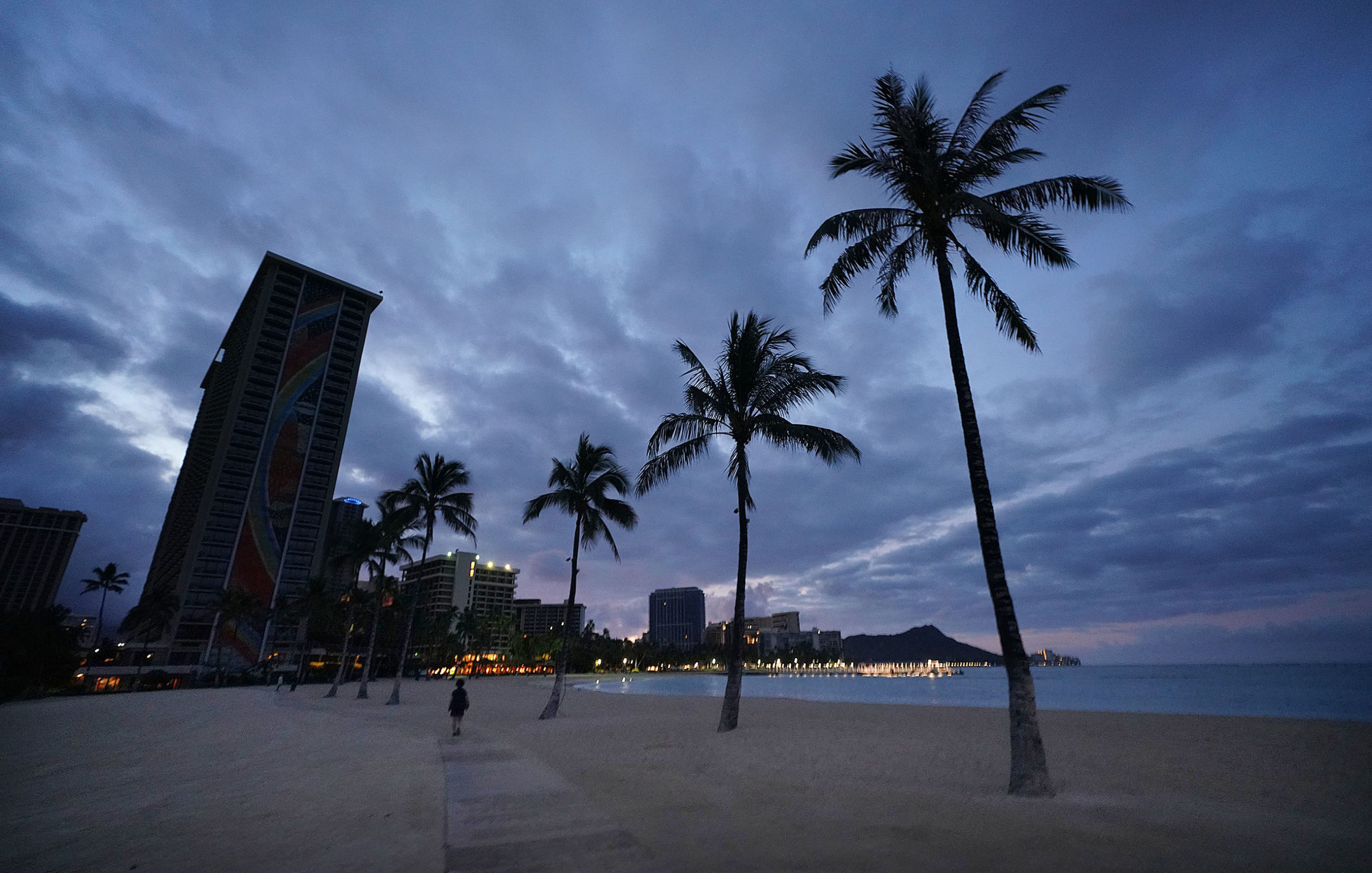Hawaii’s economy faces a ‘long, slow way back’
When Hawaii finally opens up to tourism, it will likely be years before the visitor base is anywhere near what it was before the COVID-19 crisis shut down the state’s travel industry, experts in the business say.
Meanwhile, businesses that rely on a mix of residents and tourists will likely start to fail in the fall as the federal stimulus money that has been propping up local economies — and Hawaiian families and businesses — is gone.
“It’s going to be a long, slow road back once we start accepting visitors,” said Peter Ingram, chief executive of Hawaiian Airlines, the state’s dominant airline and largest private employer with more than 7,000 employees.
Ingram and others spoke Monday during an informational briefing of a state House committee working to respond to the crisis.
Data from the Hawaii Department of Business, Economic Development and Tourism projects that it will take 2023 for the number of visitors to Hawaii to surpass 9 million, compared with about 10.4 million visitors at its peak in 2019 .

After July 31, most people who are now collecting unemployment insurance payments will lose an additional $600 a week that the federal government made available under an economic assistance bill known as the CARES Act. When that happens, people have to spend an even larger percentage of their income on necessities like rent, and that means less money can circulate through the economy to businesses like restaurants, said Carl Bonham, executive director of the University of Hawaii Economic Research Organization.
“We will see an increasing wave of announcements that your favorite restaurant is closed and not reopening,” Bonham said during the House Select Committee on COVID-19 Economic and Financial Preparedness session.
Bankruptcies are also imminent.
“I’m sure that’s coming in the coming weeks and months,” Bonham said.
In April, before some federal worker reinstatement programs began, up to 220,000 people lost their jobs in Hawaii out of a statewide private workforce of about 650,000.
The overarching question is when Gov. David Ige will lift a 14-day quarantine requirement for passengers arriving in Hawaii. Although tourists can still come, they are required by law to stay indoors for two weeks and that has caused daily arrivals to drop from around 30,000 to around 1,000, with just a few hundred leisure travellers.
Ige has extended the order until July 31; However, a group of officials and businesspeople are working on a plan that would allow visitors to get tested for COVID-19 in their hometowns and bypass quarantine if they test negative.
dr Mark Mugiishi, chief executive officer of HMSA, the state’s largest private health insurer, said the group will meet on Monday afternoon to discuss the testing plan.
A critical point, Mugiishi said, is that people should only be tested for COVID-19 if they have symptoms or meet other criteria that would lead a doctor to recommend the test. Hawaii will therefore likely need to find a partner who could conduct the testing as part of some sort of business-to-business relationship.
Lt. gov. Josh Green said last week that the state is working out such a deal with CVS Pharmacy.
Ige told reporters at a news conference on Monday that his government is working on a plan to test passengers, but that it is complicated and needs to be coordinated with the state, counties and airlines.
“We cannot allow people who are quarantined to mingle with others and it is becoming increasingly complex to determine which travelers would be subject to which requirements,” Ige said. “We will announce a date when we are ready.”
Civil Beat reporter Eleni Gill contributed to this report.



Comments are closed.